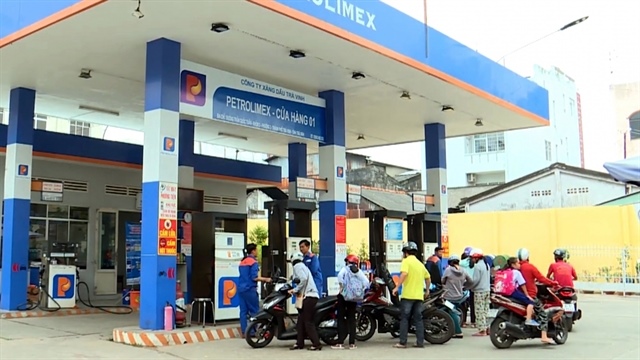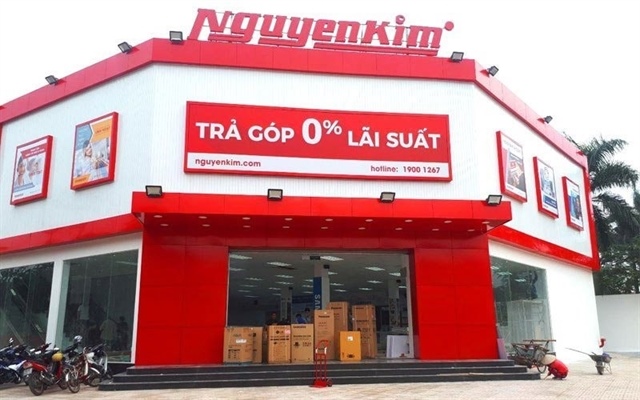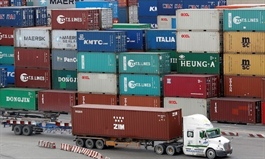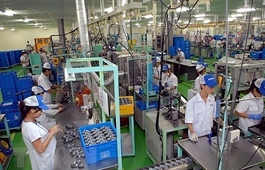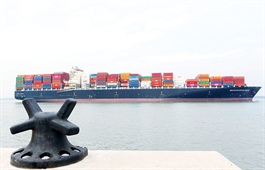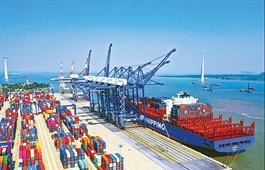Critical goals for modern agriculture
Critical goals for modern agriculture
Vietnam expects to have an advanced livestock sector through the general goals of the strategy to industrialise, modernise, sustainably develop, and improve its competitiveness. Phung Duc Tien, Deputy Minister of Agriculture and Rural Development, explains how Vietnam can realise these missions in the next decade and beyond.

Phung Duc Tien, Deputy Minister of Agriculture and Rural Development
|
The outlook for Vietnam’s livestock market was bright over the past 10 years with massive achievements made.
In the 2008-2018 period, meat production increased over 1.5-fold, eggs 2.3-fold, and fresh milk 3.6-fold. Animal breeding shifted from households to industrial farms. In 2018, there were only about 2.5 million and 4.5 million households breeding pigs and poultry, respectively, while the number of industrial animal breeding farms increased to over 19,600. The livestock sector has also attracted large investments, especially from the private sector in animal feed production.
The year 2017 marked a historic turning point for the poultry sector, with Vietnam exporting processed chicken to Japan for the first time. In 2019, Vietnam exported the first batch of milk to China, marking an important development for the country’s dairy industry.
In addition, numerous key products including pork, honey, and salted duck eggs were also exported overseas, contributing to reinforcing domestic livestock products in the international market.
In collaboration with cultivation, the husbandry sector has created livelihoods for 6.5 million households across the country. Unfortunately, pig production in 2019 was seriously damaged by the African swine fever. However, thanks to the successful application of biological solutions last year, groups bounced back with massive profits in this area.
Along with the achievements, the domestic livestock sector still has its disadvantages, including the small scale of vendors, diseases, and the underdeveloped linkages connecting production chains. In addition, there has been a disconcerting imbalance in the sector’s development.
While production, processing, and sales are all important, Vietnam has been mainly focusing on improving capacity while exported livestock products make up a small portion of more than $40 billion in the total export turnover of agricultural goods annually.
Essential requirements
The Ministry of Agriculture and Rural Development (MARD) reported to the government on building a new strategy for the 2021-2030 period, with the vision towards 2045, in order to reinforce the position of this sector, while simultaneously dealing with existing problems and determining key development directions. This strategy is a necessary tool to set the development direction while increasing competitiveness and promoting sustainable development of the sector.
The strategy is built in the context of soaring the food demand threatening food security around the globe. The United Nations predicts that the world’s population will reach 9.7 billion by 2050, nearly two billion more than today. In Vietnam, the population reached 96.2 million in 2019 (up from about 60 million in 1986) and is expected to expand to 107 million by 2030 and 120 million by 2050.
Along with that, Vietnam is forecasted to welcome at least 50 million foreign tourists by 2023, should the pandemic become controlled enough worldwide in good time.
In addition, Vietnam joining free trade agreements has opened opportunities for animal husbandry to expand sales channels to overseas, including potential markets such as Europe, instead of the domestic market. However, the livestock industry will face more challenges because European countries have developed their livestock industries with more experience in development, production, and business in general.
These countries’ livestock production accounts for 60-80 per cent of agricultural production, while cultivation accounts for 20-40 per cent. They also have advantages in terms of technology with synchronised production, slaughter, and processing. These factors are the basis to determine Vietnam’s mid-term and long-term development strategies.
In general, the National Animal Husbandry Development Strategy for the 2021-2030 period, with the vision towards 2045, sets the goals to promote the potential advantages of eco-regions to create comprehensive, effective, and sustainable development, while simultaneously adapting to climate change and ensuring biological safety as well as preventing and controlling diseases.
Besides that, the husbandry sector will ensure food hygiene and safety standards as well as the humane treatment of animals, while meeting the demand of both international and domestic markets, increasing exports and generating jobs for local workers.
Clarifying goals
The strategy issues the target to industrialise and modernise the animal husbandry sector, and promote organic methods. In addition, the sector is required to increase scientific studies and apply Industry 4.0 advancements in order to improve the competitiveness of the domestic husbandry sector.
Regarding the specific strategies to achieve by 2030, Vietnam wants to be recognised as one of the most competitive livestock industries in Asia. Husbandry products should be mostly produced in farms and professional households in order to ensure biological safety for products which are sold in both domestic and international markets.
The annual growth rate of gross output is expected to reach 4-5 per cent per year between 2021 and 2025 and an average of 3-4 per cent annually during the 2026-2030 period.
Under the strategy, the proportions of cattle and poultry slaughtered at industrial and concentrated facilities will be 60 and 40 per cent, respectively, by 2025, and 70 and 30 per cent by 2030. The proportion of processed cattle and poultry meat will also represent 25-30 per cent of the total meat production by 2025 and 40-50 per cent in the five years after that. In addition, disease-free farming areas will be built, with at least 10 at district level by 2025 and a minimum of 20 by 2030.
By 2045, Vietnam’s animal husbandry is expected to become a modern sector, and be industrialised in almost all steps from manufacturing and processing to connecting the market to sell products.
The production capacity and level of the country’s husbandry sector also aims to rank on the top of Southeast Asia by this time. In addition, Vietnam will look to prevent and control the spread of dangerous diseases and airborne infections from animals to humans.
Almost all products including meat, eggs, and milk are processed at facilities meeting the standards for biological safety and environmental friendliness. All cattle and poultry meat must be provided from concentrated and industrial slaughtered facilities, with 70 per cent of products preliminarily treated and 30 per cent of products intensively processed.
Along with specific growth targets, the strategy also mentions that the state budget will put priority on developing technical infrastructure to serve for human resources training, management capacity improvement, and to preserve rare and precious genes.
In addition, the strategy also set the requirement to encourage the participation of domestic and foreign investors in production, processing, and business related to livestock production.
In order to realise these targets, the strategy issues numerous specific solutions and requirements. Notably, it is necessary to complete the legal framework on husbandry development (including land, finance, commerce, and communication programmes). In addition, it needs to improve the country and all stakeholders’ capacity to prevent and control diseases, improve product quality and international cooperation, and develop the supporting industry for the husbandry sector.
The prime minister assigned the MARD to host and cooperate with other ministries and localities to implement the strategy, as well as build implementation programmes and schemes for approval, while simultaneously reporting on the results of every one- and five-year period. These authorities can report to the prime minister if problems arise that exceed their authority, as well as request adjustments to the strategy to match the actual conditions.


